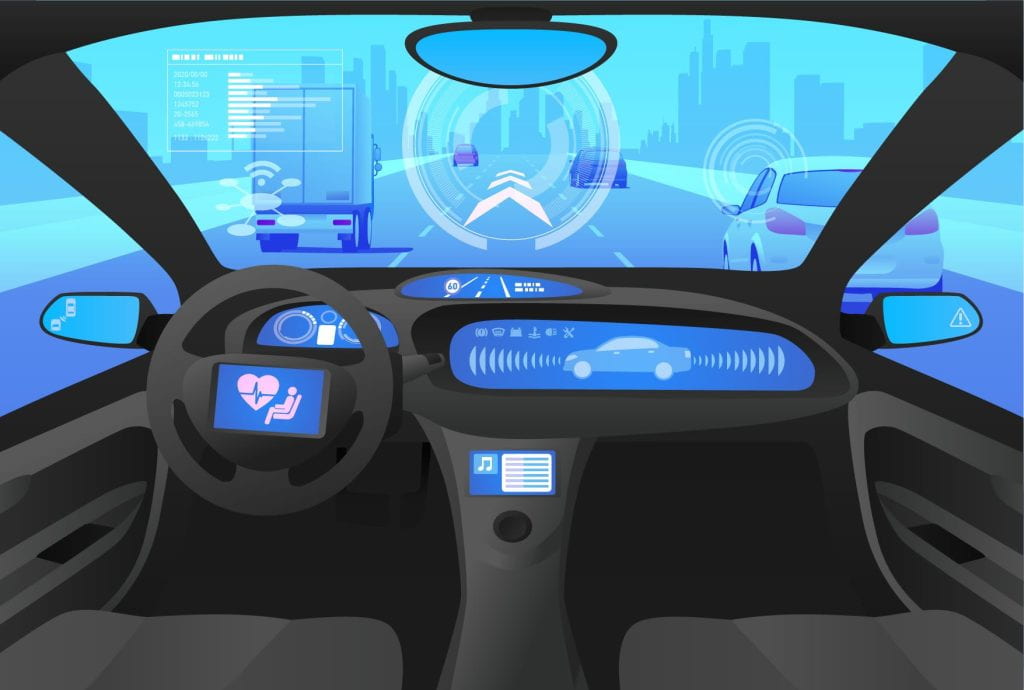By Alexander M. Wyglinski, PhD
An unabridged version of this piece was created for IEEE Vehicular Technology Society.
The last 18 months have been very exciting times for autonomous vehicle technology. New self-driving car prototypes have been taking to the streets, a growing number of companies have announced initiatives and collaborations to pursue activities in the autonomous vehicle space, and state governments across the nation are working on legislation for allowing autonomous vehicles to travel on public roads. Innovations in sensor systems, embedded processor technology, navigation, automatic control, and real-time decision have collectively resulted in autonomous vehicle platforms that may potentially enable the safe operation of these highly complex systems.
But up until now, almost all developments and on-road experimentation have been done in relative isolation. Even when autonomous vehicle platforms are actually immersed in road traffic, the vehicles are not really “interacting” with surrounding cars, bicycles, buses, and other road vehicles. Instead these autonomous vehicles travel along at 25 MPH in their own bubbles, while real-world traffic zips by.
Given all of these advances in autonomous vehicles, one should ask: What is holding us back? What’s missing?
The answer: wireless connectivity.
Human drivers are constantly communicating with each other. We use our signals to indicate our intention to turn or change lanes; we wave other cars along to turn or merge; we flash our high beams to warn approaching cars of an upcoming hazard, like a heard of deer in the road. From an autonomous vehicle perspective, wireless communication between vehicles possesses significant benefits in providing driverless cars with an additional dimension of information that helps ensure their driving decisions are the most appropriate, given the prevailing road conditions.
While there has been a significant amount of innovation in driverless cars, there are three areas of research underway to make autonomous vehicles a reliable and safe reality:
1. Choosing the right technology.
There is currently a debate within the wireless community around which communications technology would be best for connecting vehicles to each other. Some advocate DSRC (Dedicated Short Range Communications), a communications standard supporting vehicular networking across 75 MHz at 5.9 GHz. Others have proposed using 5th Generation (5G) cellular communications for connecting vehicles. Both proposed approaches have their pros and cons, and it will take some time to form a viable solution that can be deployed on the road.
2. Defining efficient, low-latency vehicular networking architectures.
Although there have been several proposed vehicular networking architectures proposed, there are a plethora of practical considerations that need to be accounted for, from the highly dynamic transmission environment that affects network topology to legislative considerations with respect to installing wireless devices on public infrastructure such as signage, roadways, lampposts, etc. In the next several years, the wireless community will find out firsthand how these practical considerations may significantly affect the design of these vehicular networking architectures.
3. Securing autonomous vehicles from cyber attacks.
A typical vehicle today possesses 70 or more embedded processing systems, each performing a specific operation (some of which are critical). In the last 5 years it has been shown that hackers can compromise the security of a vehicle via Bluetooth or the Tire Pressure Monitoring System (TPMS), taking out systems such as the brakes or the automatic transmission.
Now imagine an autonomous vehicle that is loaded up with embedded processors and connected to the world via different wireless links. Driverless cars are essentially networked computers on wheels, which an individual with enough time and skill can learn to hack. Devising solutions for automotive cyber security is an urgent need that requires immediate attention.
It is great to see that autonomous vehicle technology is taking off, but we still have some work to do to make it an integral part of the public road traffic landscape. By connecting these autonomous vehicles to each other and the Internet in a reliable, low-latency, and secure manner, we can ultimately achieve the deployment of a technology that only a few decades ago was considered science fiction.
About the Author

Alexander Wyglinski, PhD, is an Associate Professor in the Electrical & Computer Engineering department at Worcester Polytechnic Institute (WPI). He is also the Co-Director of the university’s Limerick Project Center and a Faculty Advisor in the Women in their Electrical and Computer Engineering (WECE) program. Professor Wyglinski’s research areas include wireless communications, cognitive radio, signal processing and more. He is a faculty member in WPI’s online ECE graduate programs.
Interested in the future of autonomous vehicles?
Become a master of mechanical, robotics, or systems engineering
♥ Love this post? Subscribe to Catalyst.

